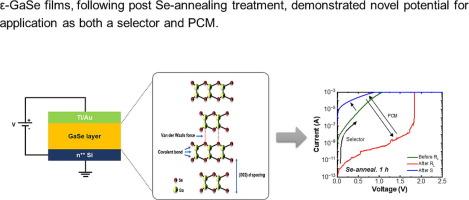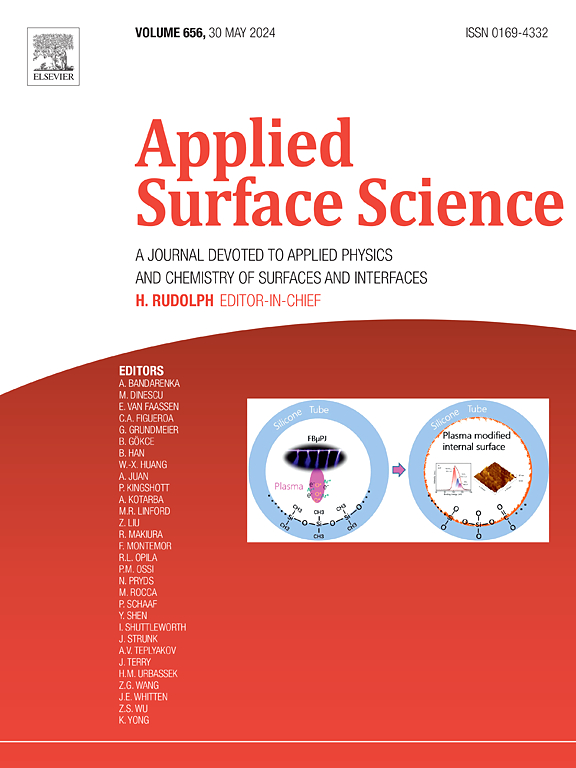Electrical properties and conduction mechanisms of ε-GaSe films for selector and phase-change memory applications
IF 6.3
2区 材料科学
Q2 CHEMISTRY, PHYSICAL
引用次数: 0
Abstract
Owing to the pressing requirement for advanced memory solutions driven by explosive data growth, nonvolatile and fast-operating 1S1R structured XPoint memory has become a prominent focus, with recent interest shifting towards the 1S structured selector-only memory. The use of chalcogenide-based materials in these technologies constrains the application of such memories because of their complex quaternary compositions. This study investigated the previously unreported potential of GaSe, a simple binary Se-based chalcogenide, for applications as a selector and phase-change memory (PCM). In this study, ε-GaSe thin films were deposited using thermal evaporation and subsequently annealed in a Se atmosphere for 1 and 2 h. These ε-GaSe thin film devices incorporated metal–insulator–metal construction to exhibit both selector and PCM characteristics. The ε-GaSe device that was Se-annealed for 1 h demonstrated superior performance with a lower threshold voltage and off current, high selectivity as a selector, and reduced set voltage and reset power as a PCM. These characteristics render the proposed device a highly promising candidate for dual selector/PCM applications. To explain the electrical behavior of the ε-GaSe device, we propose the conduction mechanism model depending on the Se-annealing time, which is related to the change in the physical properties of ε-GaSe.


用于选择器和相变存储器的ε-GaSe 薄膜的电学特性和传导机制
由于数据爆炸式增长对先进存储器解决方案的迫切需求,非易失性和快速运行的 1S1R 结构 XPoint 存储器已成为一个突出的焦点,最近人们的兴趣转向了 1S 结构纯选择器存储器。在这些技术中使用的是基于卤化镓的材料,由于其复杂的四元成分,限制了此类存储器的应用。本研究调查了以前未报道过的硒化镓(一种简单的二元硒基胆化物)作为选择器和相变存储器(PCM)的应用潜力。在这项研究中,ε-GaSe 薄膜采用热蒸发法沉积,随后在硒气氛中退火 1 小时和 2 小时。这些ε-GaSe 薄膜器件采用金属-绝缘体-金属结构,同时具有选择器和 PCM 特性。经过 1 小时硒退火处理的ε-GaSe 器件性能优越,具有较低的阈值电压和关断电流,作为选择器具有较高的选择性,作为 PCM 具有较低的设定电压和复位功率。这些特性使所提出的器件成为双选择器/PCM 应用中极具潜力的候选器件。为了解释ε-GaSe 器件的电学行为,我们提出了与ε-GaSe 物理性质变化有关的传导机制模型,该模型取决于硒退火时间。
本文章由计算机程序翻译,如有差异,请以英文原文为准。
求助全文
约1分钟内获得全文
求助全文
来源期刊

Applied Surface Science
工程技术-材料科学:膜
CiteScore
12.50
自引率
7.50%
发文量
3393
审稿时长
67 days
期刊介绍:
Applied Surface Science covers topics contributing to a better understanding of surfaces, interfaces, nanostructures and their applications. The journal is concerned with scientific research on the atomic and molecular level of material properties determined with specific surface analytical techniques and/or computational methods, as well as the processing of such structures.
 求助内容:
求助内容: 应助结果提醒方式:
应助结果提醒方式:


